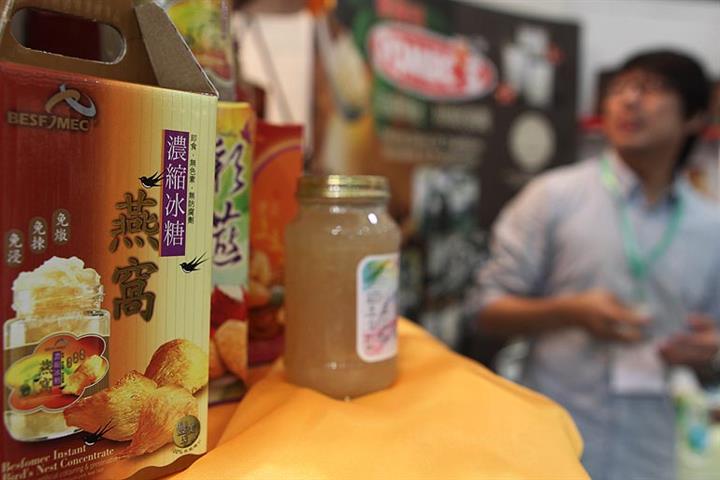 Less Nutritious Than Eggs, Bird’s Nests Still Find USD4.6 Billion Market in China
Less Nutritious Than Eggs, Bird’s Nests Still Find USD4.6 Billion Market in China (Yicai Global) Dec. 9 -- Xin Ba, a well-known live streamer, recently sold edible bird's nests with extremely low active ingredients for which he had to later compensate buyers, thus arousing public misgivings over the nutritional value of the traditional delicacy. Though the nests proved not as nutritious as thought, their market size nonetheless reached a cool CNY30 billion (USD4.57 billion) last year, a survey shows.
China is the world's largest consumer of these cliff swallow nests and has seen a rapid rise in their market, with compound growth of more than 30 percent last year, per a trade white paper for last year the Edible Bird's Nest Market Committee of China Agriculture Wholesale Market Association issued last month.
The nests make up nearly 30 percent of the turnover of nutritional and healthcare products, blowing away elixir and cure-all donkey-hide gelatin, herb tea and ginseng to rank first, with most of its consumers being young women, per the white paper.
Edible bird's nest is so sought after because it contains bird's nest acid, also known as sialic acid, a compound that is 7 percent to 12 percent of its mass, a ratio 150 times that of milk and 300 times that of eggs, and which has a profound effect on infants’ brain and memory development, or so its advertising claims.
Sialic acid can promote brain development among babies and toddlers, but they can also obtain sialic acid through breast milk and milk powder under normal conditions, Zhong Kai, director of China Food Information Center, noted, adding an adult liver can produce sialic acid by itself in much greater amounts than those obtained from the nests. "The nutritive value of edible bird's nest is actually much lower than that of high-protein foods such as eggs and milk," he added.
The traditional delicacy consists of swallows’ saliva and down, and its special source high on Southeast Asia’s cliffs determines its rarity, said Prof. Tian Fengwei with the School of Food Science and Technology at Jiangnan University, noting traditional concepts and consumers' pursuit of health are driving its price rises.
China has devised source tracing labels for Indonesian and Malaysian edible bird's nests with their larger output to avert potential safety hazards.
Editor: Ben Armour, Xiao Yi